|
||||
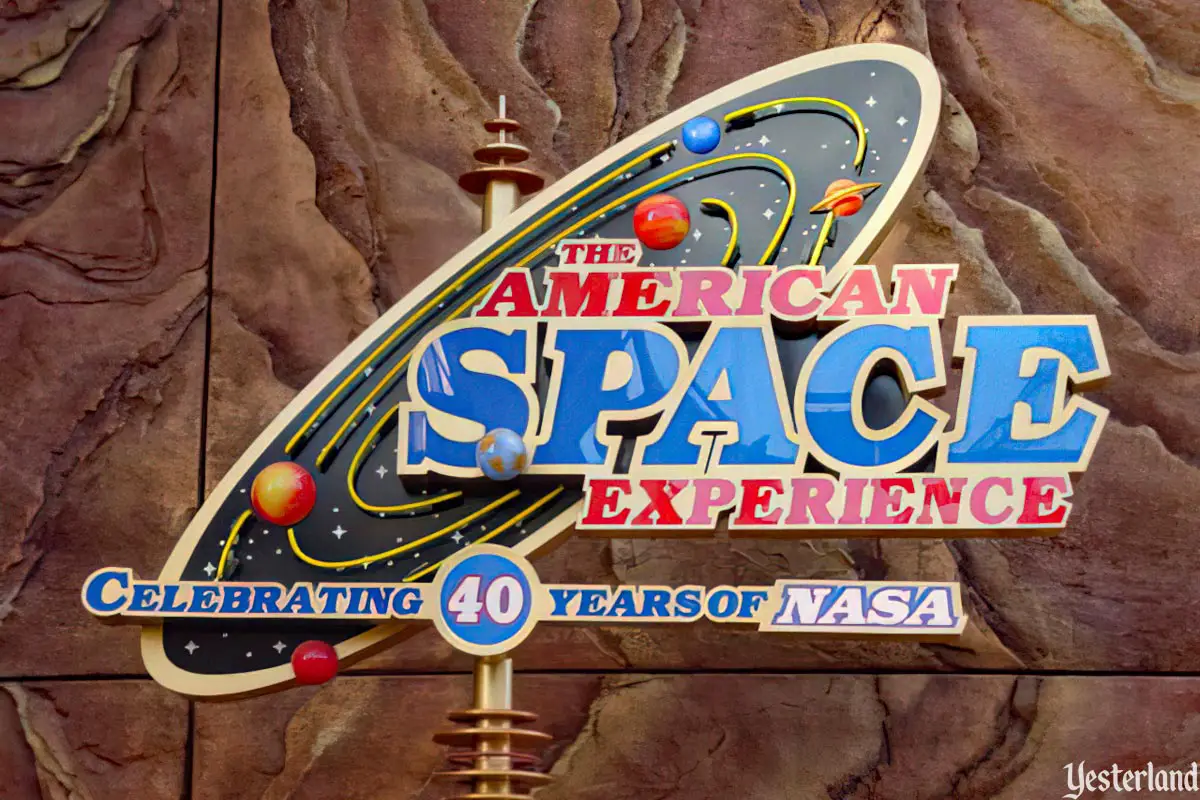
Photo by Allen Huffman, 2000 |
||||
|
You’ve just completed your thrilling high-speed loop through Tomorrowland with Rocket Rods. What are you going to do next? |
||||
|
|
||||
|
How about visiting The American Space Experience, Celebrating 40 Years of NASA? It’s right at the exit from Rocket Rods, below the 1998 Tomorrowland mural. |
||||
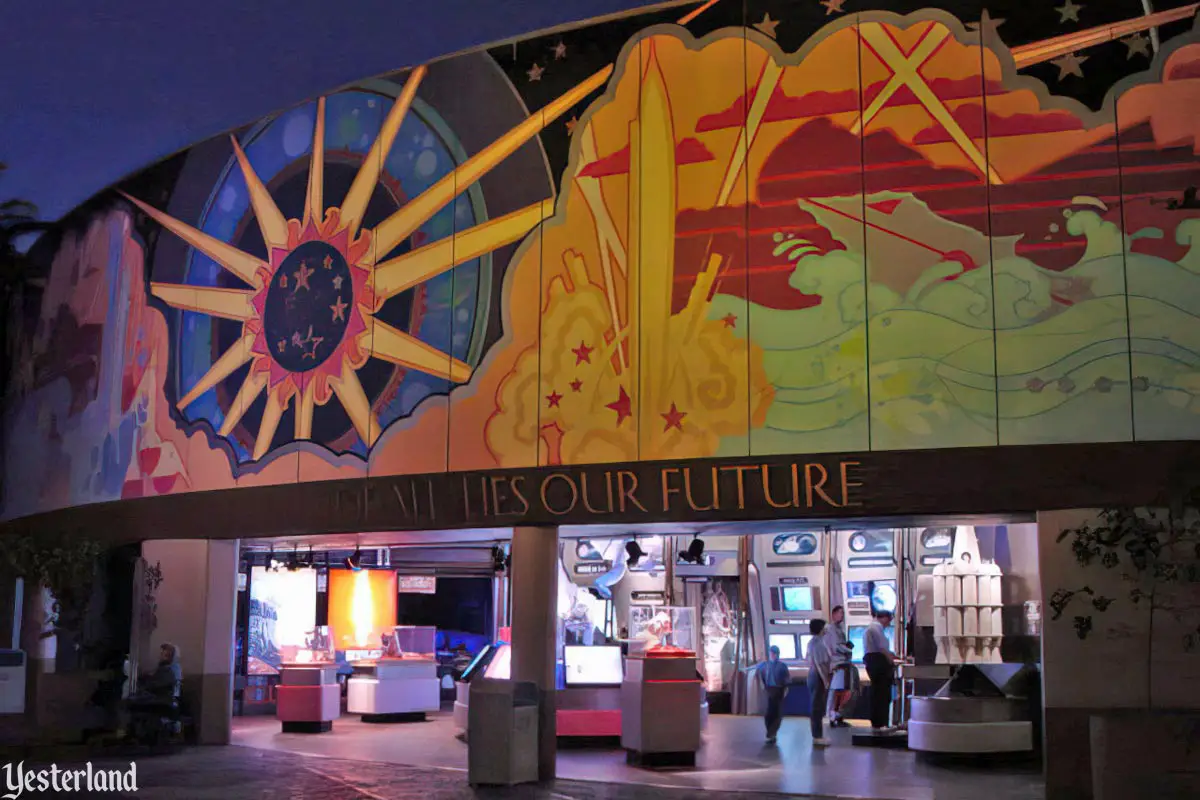
Photo by Allen Huffman, 2000 The American Space Experience, below the 1998 Tomorrowland mural |
||||
|
The National Aeronautics and Space Act of 1958 established the National Aeronautics and Space Administration. Everyone calls it NASA. Take some time to see what NASA has been up to lately at this exhibit established in 1998. Okay, this isn’t the most thrilling experience in the park. The 2,500-square-foot exhibit is more like visiting a corner of the Museum of Space History in Alamogordo, New Mexico, than visiting the world’s greatest theme park. But, if you take the time to examine the content, it really is interesting. |
||||
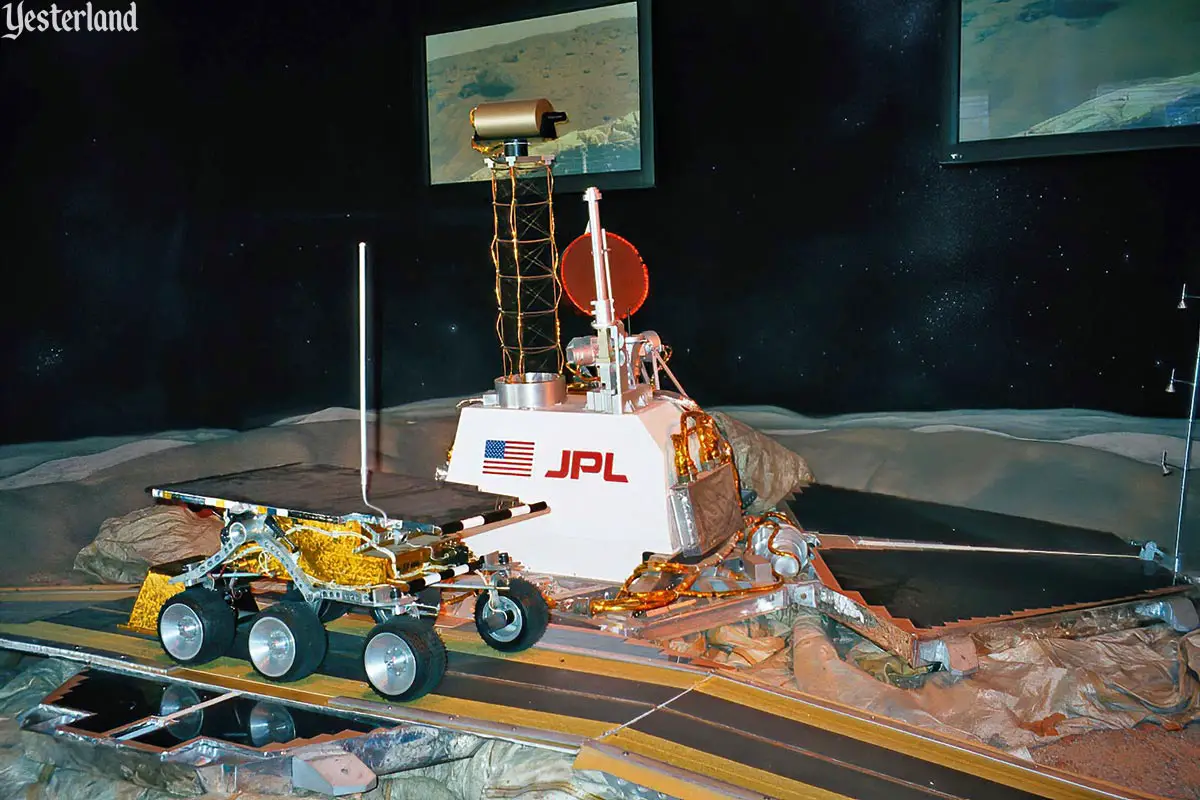
Photo by Werner Weiss, 2000 A model of the Mars Pathfinder and the rover Sojourner |
||||
|
Scientists at NASA’s Jet Propulsion Laboratory used models of Pathfinder and Sojourner to prepare for the 1997 Mars mission. You can see those models here at the exhibit. |
||||
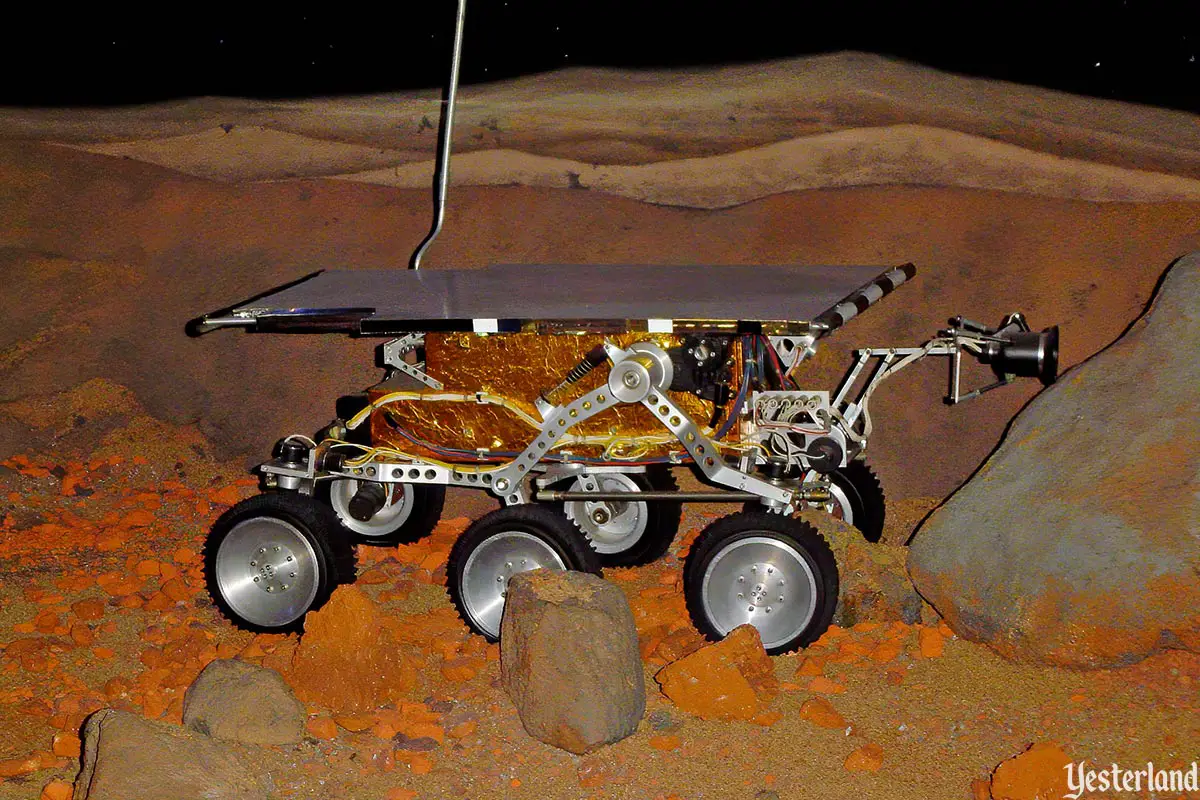
Photo by Bryan Pugh, 2003 Close-up of the six-wheeled rover Sojourner |
||||
|
JPL named the six-wheeled robotic rover “Sojourner” in honor of Sojourner Truth, 19th-century American abolitionist and champion of women’s rights. |
||||
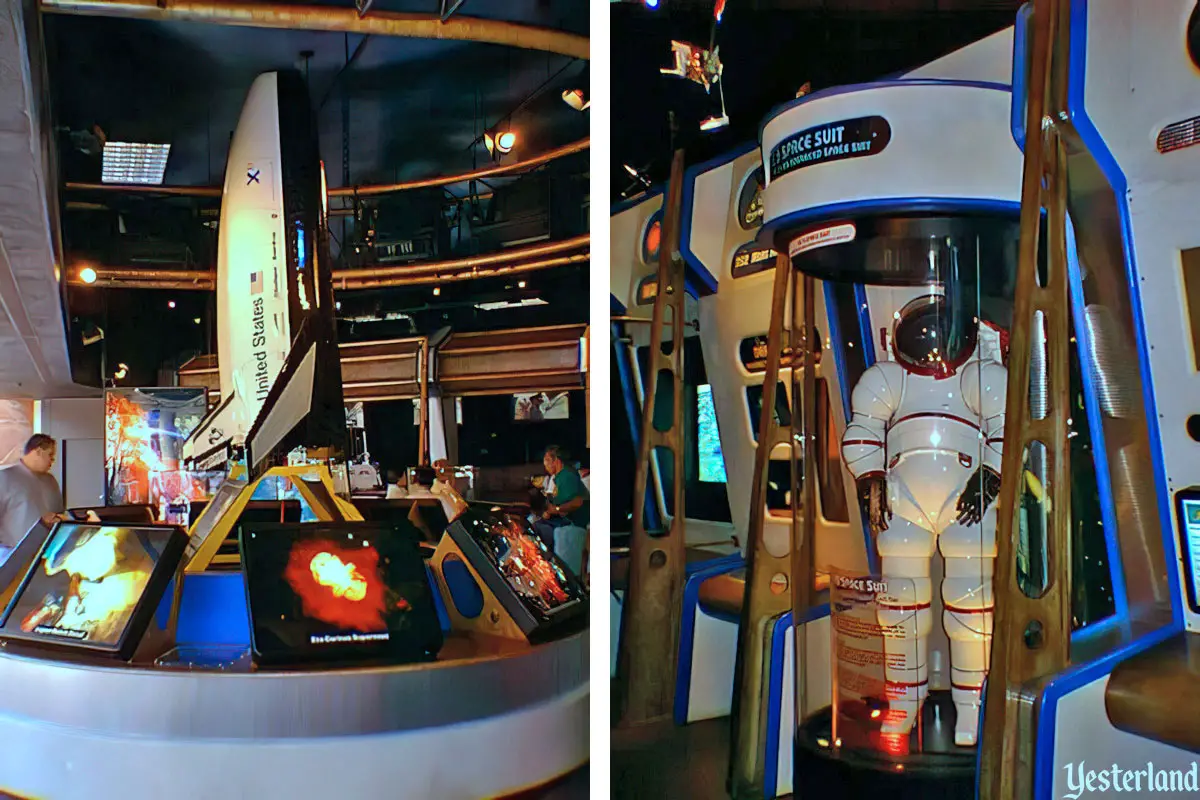
Photos by Allen Huffman, 1998 and 2000 X-33 Reusable Launch Vehicle model (left) and AX-5 space suit prototype (right) |
||||
|
Take a look at the large model of the X-33 Reusable Launch Vehicle (RLV), and read all about it. It’s NASA’s first new spaceship design in 25 years. You’ll read that it could replace the current Space Shuttle. You know those big external fuel tanks on the Space Shuttle? The idea is that the X-33 RLV won’t need them. It’s called a “single stage to orbit” (SSTO) design. Check out the actual Moon rock. It was retrieved by the crew of the Apollo 16 mission in April 1972. Unlike when the public had their initial chance to see Moon rocks, there’s now no line to see it. It’s a sample of breccia, encased in a clear plexiglass pyramid. Take a look at the AX-5 space suit. It’s a prototype for an advanced, hard-shell suit for use on the International Space Station. This all-metal, high-pressure suit will finally allow astronauts to exit from their spacecraft into space without first having to breath pure oxygen for several hours. The American Space Experience is pretty interesting, eh? |
||||
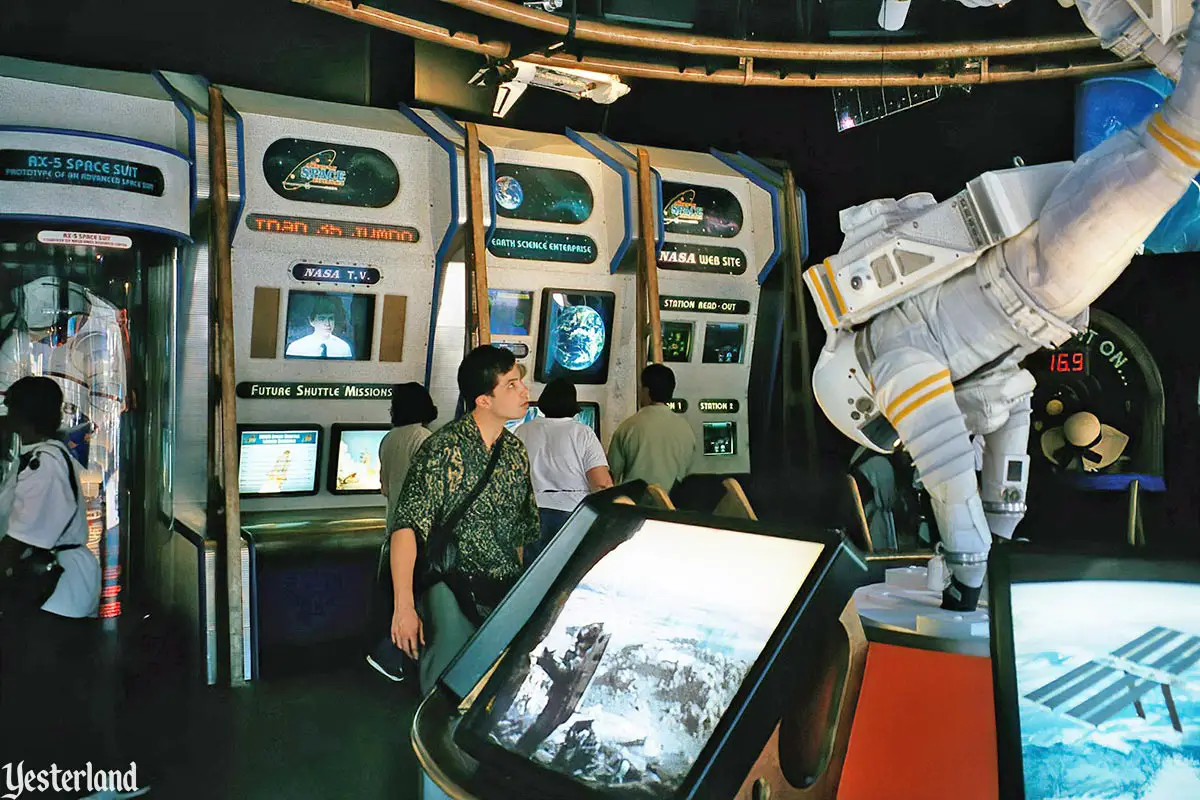
Photo by Werner Weiss, 2000 Exhibits about astronauts and space travel |
||||
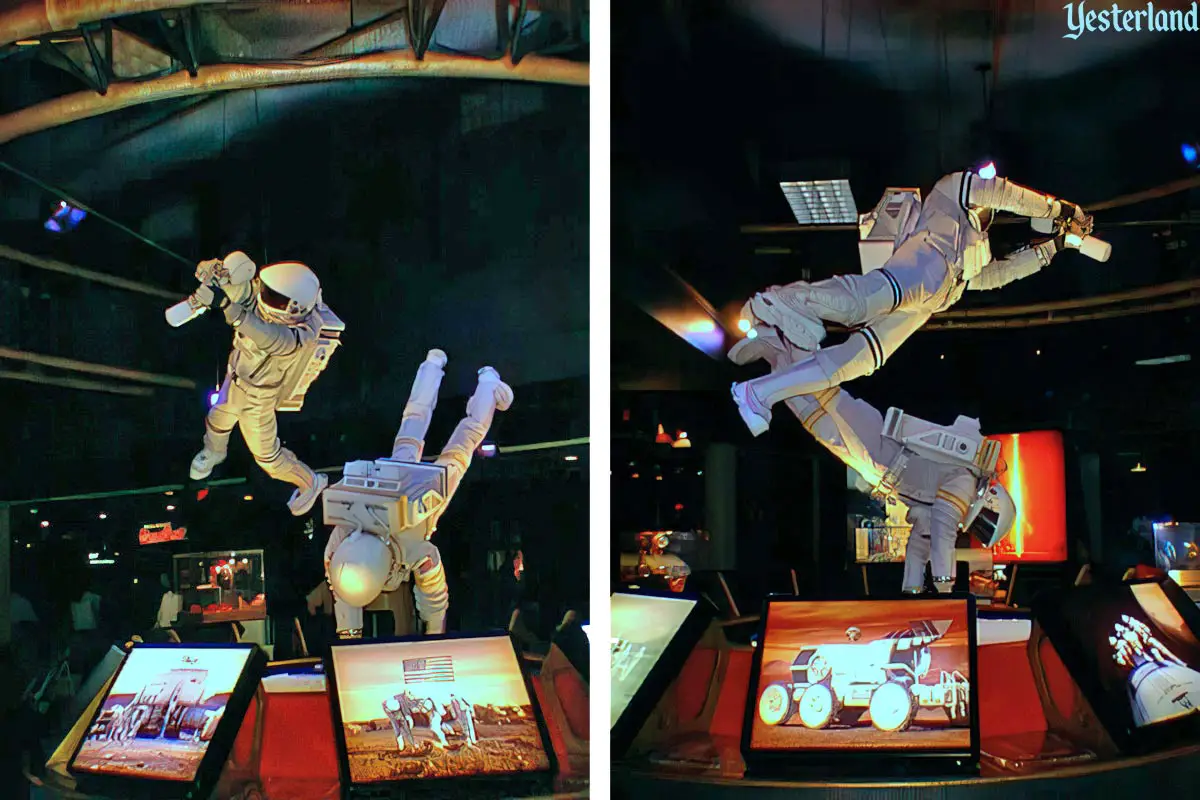
Photos by Allen Huffman, 1998 Working in Space |
||||
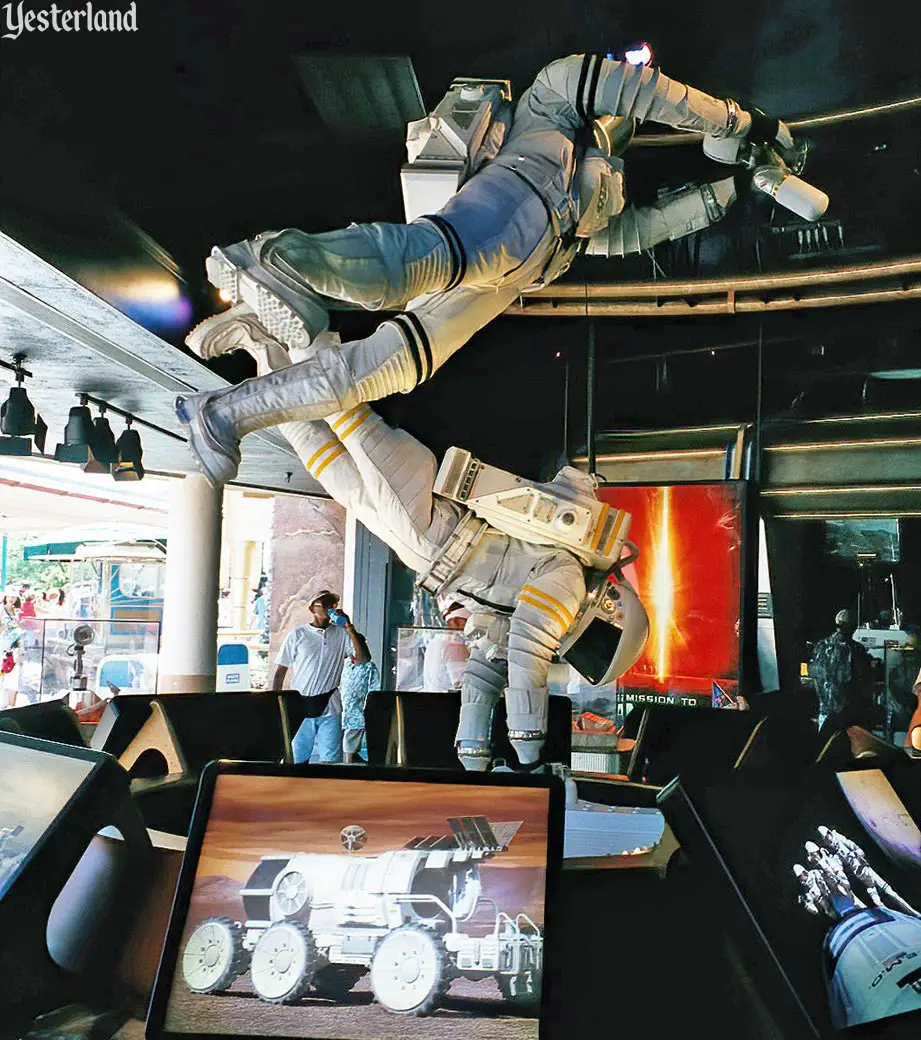
Photo by Werner Weiss, 2000 Exhibits open to the outside |
||||
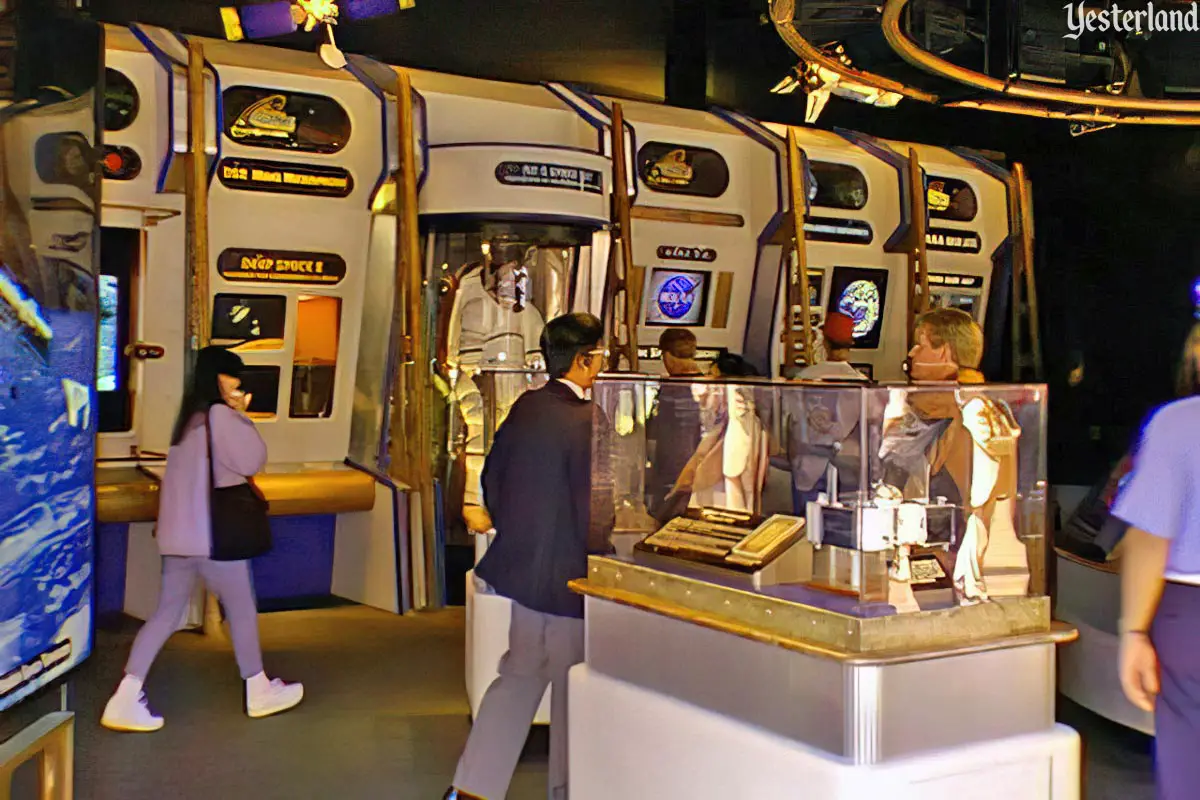
Photos by Allen Huffman, 1998 Like a science museum |
||||
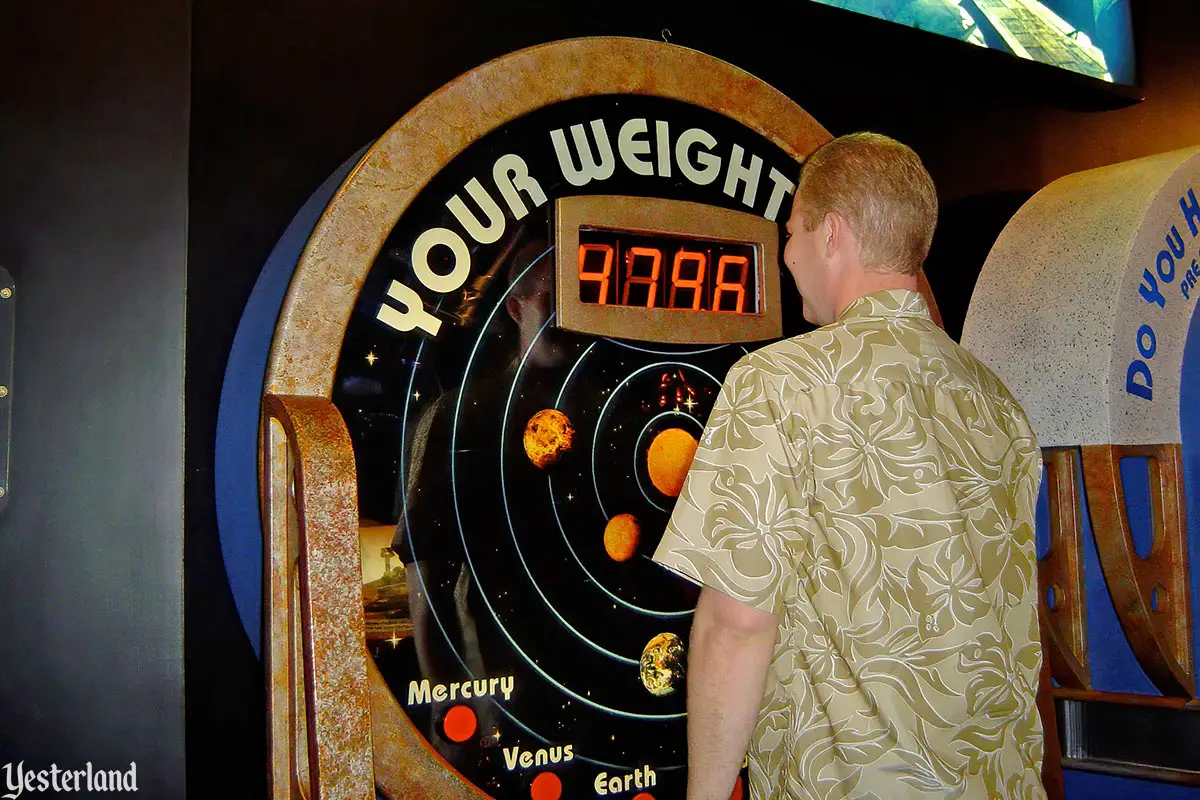
Photo by Bryan Pugh, 2003 Your weight on Jupiter |
||||
|
You can see what your weight would be on other planets. If you select a planet that’s larger than Earth, you’ll be happy that your weight on Earth is so much lower. |
||||
|
|
||||
|
The American Space Experience opened May 22, 1998, as part of Disneyland’s 1998 Tomorrowland redo. More than any other attraction from that redo, The American Space Experience was consistent with Walt Disney’s original intent for Tomorrowland, as described in the 1955 dedication plaque for Tomorrowland: TOMORROWLAND A vista into a world of wondrous ideas, signifying man’s achievements… a step into the future, with predictions of constructive things to come. Tomorrow offers new frontiers in science, adventure and ideals: the Atomic Age, the challenge of outer space, and the hope for a peaceful and unified world. Walt Disney The American Space Experience was genuinely about the “challenge of outer space,” and was genuinely educational. But most people who spend hundreds of dollars to take their family to Disneyland for the day aren’t looking for genuinely educational science museum exhibits. |
||||
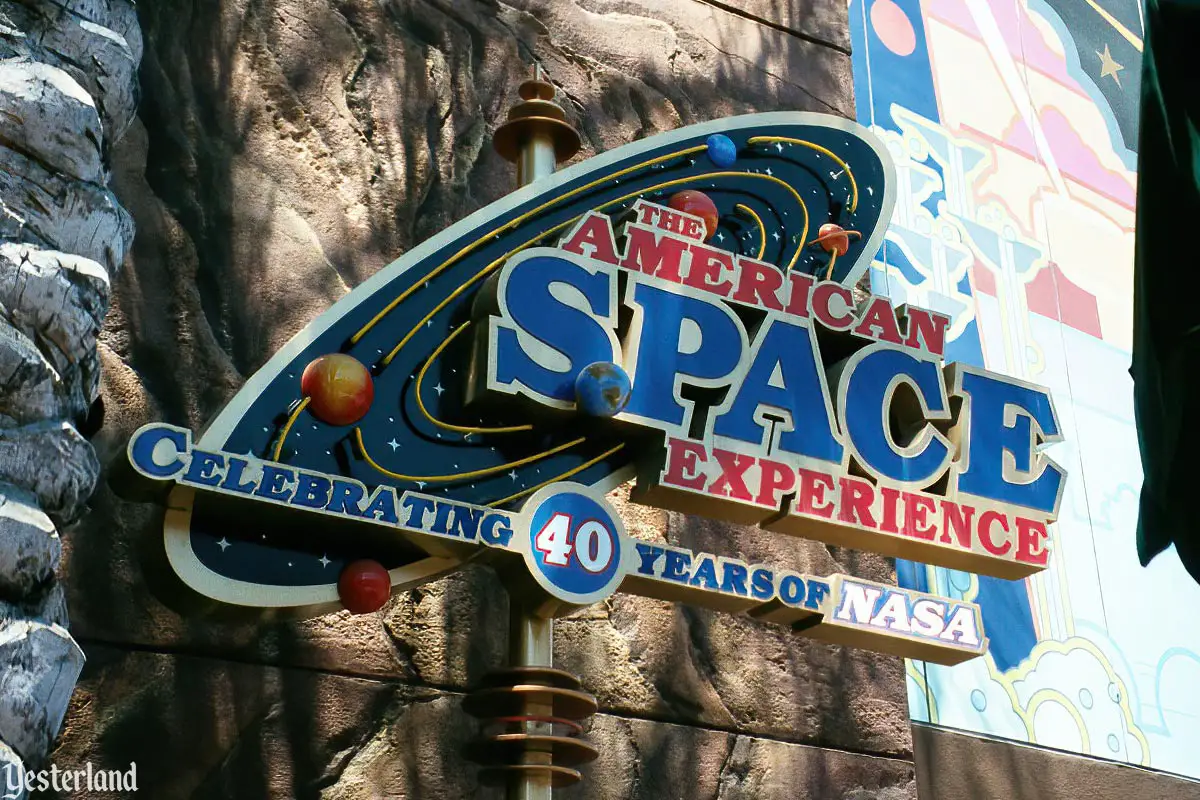
Photo by Werner Weiss, 2000 Exterior sign in the New Tomorrowland of 1998 |
||||
|
In some ways, The American Space Experience was reminiscent of early Tomorrowland exhibits like Monsanto Chemical Company’s Hall of Chemistry (1955-1966) and Kaiser Aluminum’s Hall of Aluminum Fame (1955-1960). Such corporate exhibits allowed Walt Disney to fill the space in Tomorrowland until he could afford to replace them with unique attractions that were both educational and entertaining, such as Adventure Thru Inner Space and the Carousel of Progress. NASA updated The American Space Experience over the years. For example, in October 2002, NASA added a Mars Exploration Rover (MER) mock-up showing how such rovers would be used on the Red Planet. |
||||
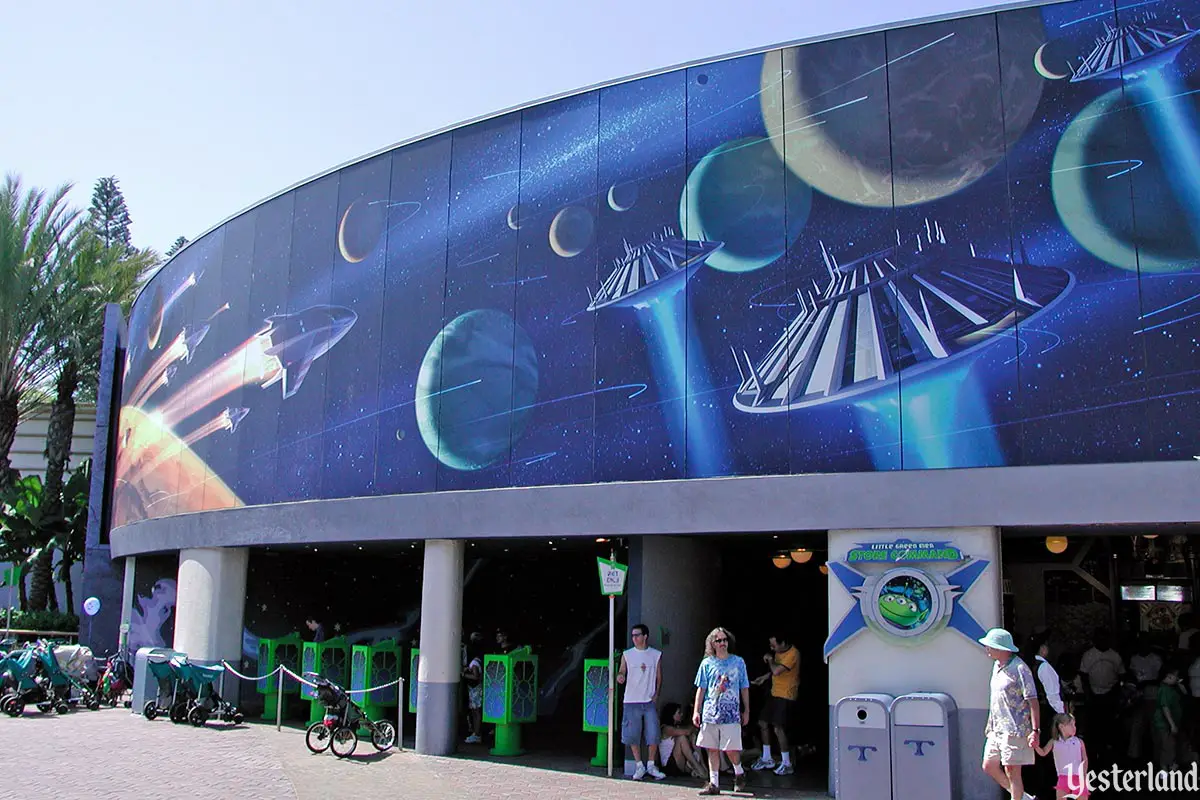
Photo by Werner Weiss, 2006 A new mural and FASTPASS distribution |
||||
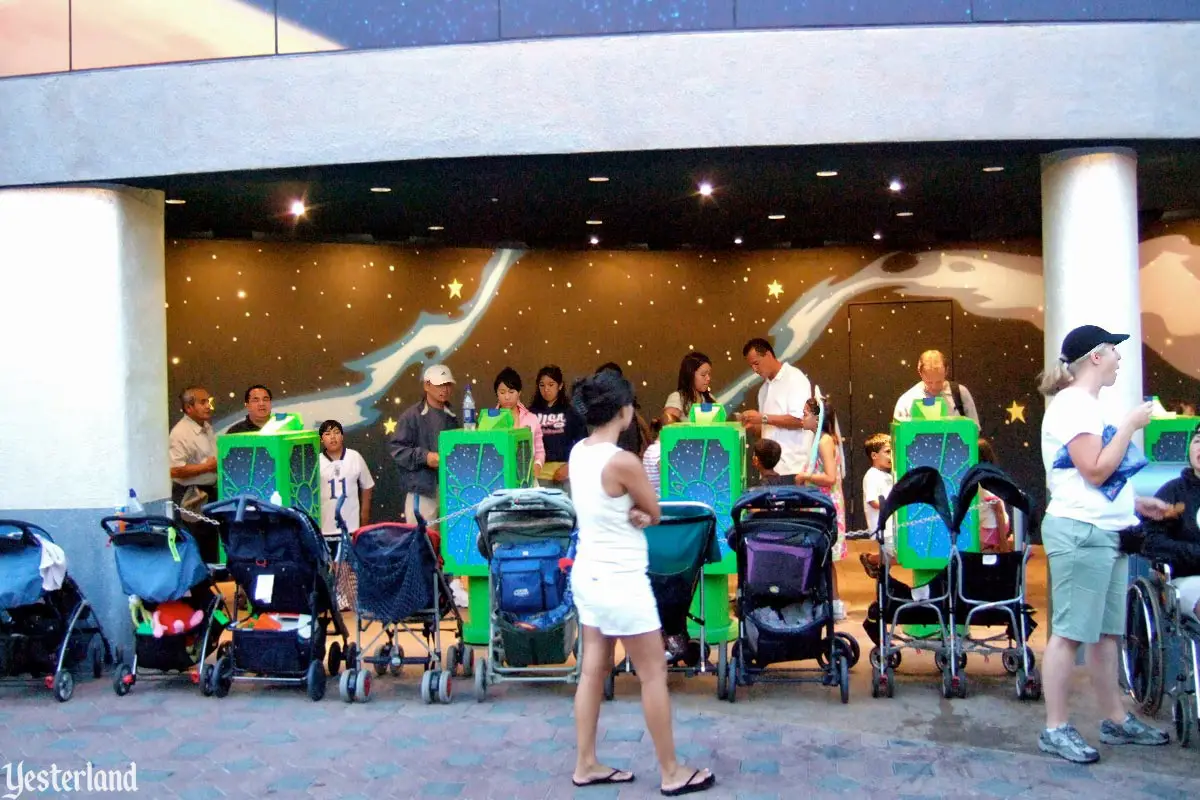
Photo by Allen Huffman, 2005 FASTPASS distribution for Buzz Lightyear Astro Blasters |
||||
|
The American Space Experience closed permanently on October 26, 2003. Buzz Lightyear Astro Blasters replaced the exhibit, as well as what had been the queue for Rocket Rods. |
||||
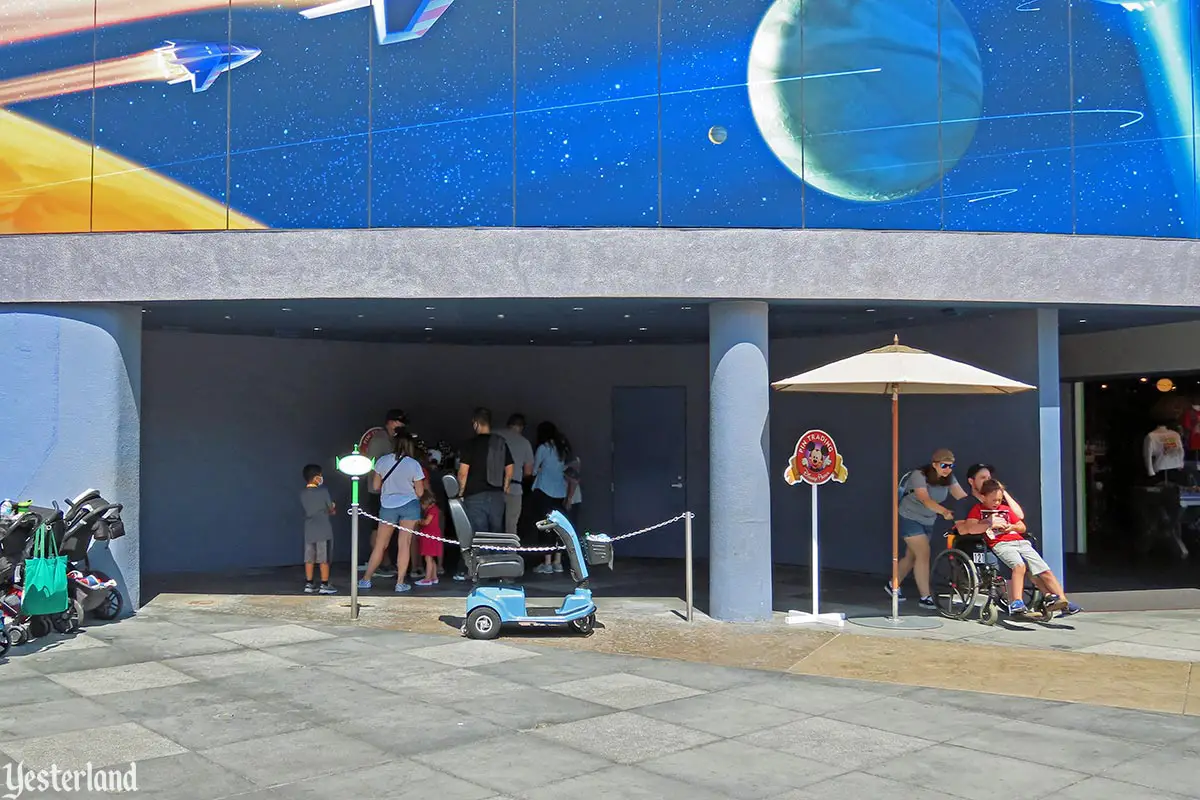
Photo by Chris Bales, 2021 Pin Trading, where FASTPASS used to be, after the demise of FASTPASS |
||||
|
Remember NASA’s X-33 program earlier in this article? NASA began it in 1996 and canceled it in 2001—even though construction of a prototype was around 85% complete. There had been numerous technical difficulties. There have continued to be dramatic developments in the space program since the closing of Disneyland’s NASA exhibit—with more to come. NASA’s Artemis missions will land the first woman and first person of color on the Moon. After the Moon, the next destination is Mars. You’ll just need to get your information about these developments somewhere other than Disneyland’s Tomorrowland. |
||||
|
|
Click here to post comments at MiceChat about this article.
© 2022 Werner Weiss — Disclaimers, Copyright, and Trademarks Updated September 2, 2022 | |||